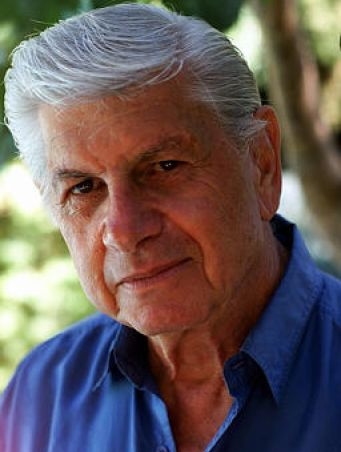
Alan Feltman
A day with cousin Alan Feltman at Gold Star Recording Studios
I was 15 in the winter of 1954-55, visiting family in LA with my mother. One morning, Larry invited me to tag along with him at Gold Star for the day. It was an exciting prospect because I had just recently bought a home “reel-to-reel” tape recorder, the only kind they had back then and still a novelty with hobbyists. I obsessively recorded anyone I could lure within range of my microphone. So, understandably, on entering the Gold Star control room my eyes popped at the sight of a gigantic sound mixer running across the entire length of the opposite wall. The engineer sitting at the controls (Larry on that day!) looked out on the adjoining stage through a sound proof glass window. Therein was a lone piano, a casual assortment of folding chairs, music stands, mics, booms and electric cables snaking across the floor. Down the hall a bit I discovered a massive tape recorder console that could accommodate a 10-inch reel that fed tape into the magnetic sound heads at a brisk high fidelity rate of 15 inches per second, a far cry from my own puny machine with its 7-inch reels and 3½ in/sec speed. Nearby, a device resembling an ordinary record turntable could cut a vinyl LP prototype from a finished master tape. All this equipment seemed poised and waiting for the day’s session to begin. Presently, the band filed onto the stage, grabbed chairs and stands and began warming up while mics were placed and sound levels set. When all was ready and the cacophony ceased, the control room lights dimmed and I stood behind Larry as he signaled over the intercom: “Beginning take 1!” They started playing but then he stopped them abruptly because microphone placements and mixer settings needed some adjustments. In fact, there were many takes and re-takes and audits of roaring playback (so one could hear everything, he told me), where cheers meant they could now go on to record the next tune and dismay could send Larry scurrying to the tape deck to snip out an unwanted segment and splice in something better. And as I observed all of this over the course of the day I slowly came to realize what it is that a good engineer is made of. It goes a long way beyond knowing all about microphones and sound equalization curves and the nimble management of banks of switches and sliders, or even the possession of “golden” ears. What Larry had in addition to all of that and to a remarkable degree was a disarmingly even-tempered disposition, a willingness to work quietly in the background, listen attentively to what was demanded of him, offer alternatives when the demands were unrealistic, and having the stamina to keep going uncomplainingly hour after hour until all agreed that a decent product had emerged.
When we left the studio for the drive home, I was weary and awed - even overwhelmed - but I did have two spanking-new boxed reels of genuine “Audiotape” brand recording tape tucked under my arm, compliments of the staff, the very same brand of tape used at Gold Star. But then, sadly, I realized that wherever I was headed, most likely it was not to become a professional sound recording engineer, at least not while Larry Levine was setting the bar.
Webmaster: Jos Megroedt | Website: http://www.josmegroedt.com/ |
This site is hosted by: http://www.hostingphotography.com/

